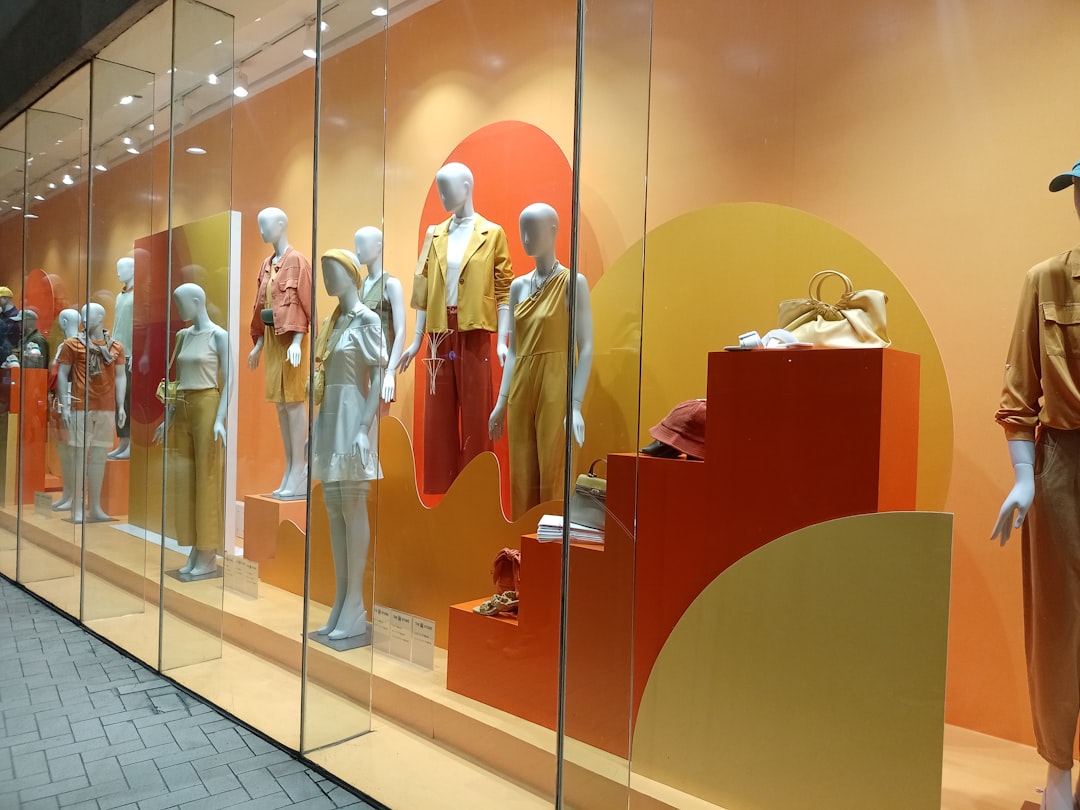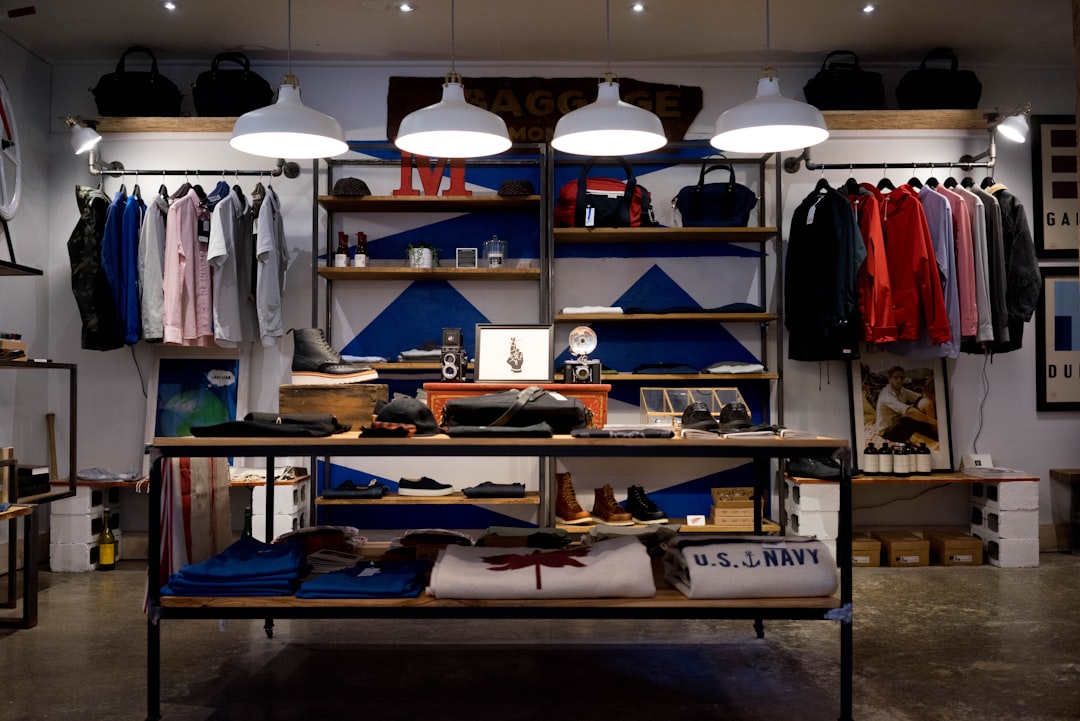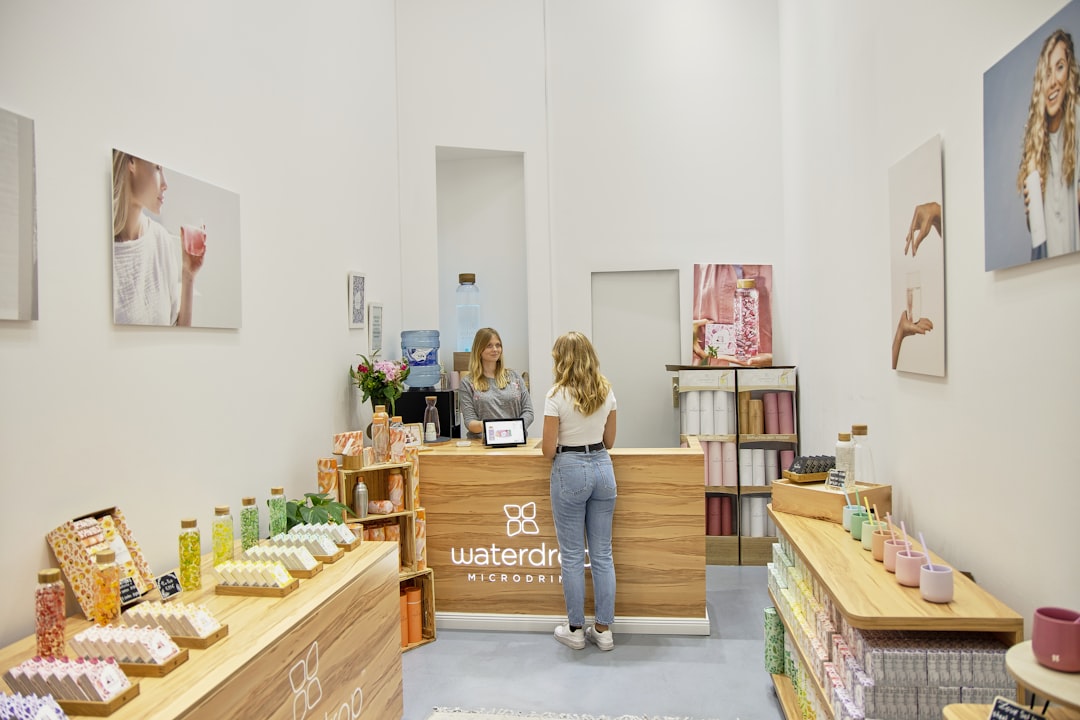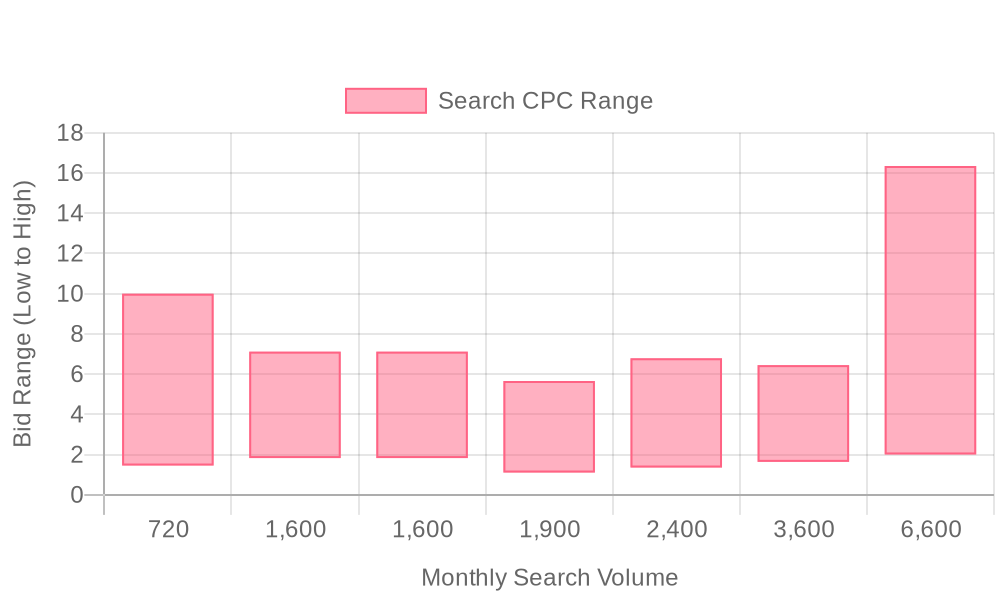
Supercharge your lead generation with a FREE Google Ads audit - no strings attached! See how you can generate more and higher quality leads
Get My Free Google Ads AuditFree consultation

No commitment
Supercharge your lead generation with a FREE LinkedIn Ads audit - no strings attached! See how you can generate more and higher quality leads
Get My Free Google Ads AuditFree consultation

No commitment
Supercharge your lead generation with a FREE Meta Ads audit - no strings attached! See how you can generate more and higher quality leads
Get My Free Google Ads AuditGet My Free LinkedIn Ads AuditGet My Free Meta Ads AuditFree consultation

No commitment
Supercharge your lead generation with a FREE Google Ads audit - no strings attached! See how you can generate more and higher quality leads
Get My Free Google Ads AuditFree consultation

No commitment
In the competitive landscape of retail, Google Ads offers a prime opportunity for retail store fixtures to capture intent-driven potential customers. This channel bridges online and offline marketing by intercepting prospects precisely when they search for products related to fixtures. For those in the, leveraging Google Ads can effectively increase visibility, traffic, and ultimately sales. Targeting capabilities and data-driven insights offer precision not found in other advertising channels. However, many retailers miss high‑value prospects due to gaps in tracking, which leads to lost opportunities. Let’s explore how addressing these challenges with strategic Google Ads use can optimize the promotion of your retail fixtures.

Retail store fixture companies face a complex buying cycle, often dealing with high-value transactions and discerning commercial buyers. Maximizing lead generation from Google Ads requires a tailored approach that unifies data, sharpens targeting, and ensures every touchpoint is relevant and actionable. With unified analytics and intent signals, marketing and revenue teams can deliver the right message to buyers at critical decision moments.
Modern Google Ads strategies for retail store fixtures go beyond standard keyword bidding. Success hinges on integrating precise audience intelligence, optimizing landing experiences, and ensuring that sales teams receive enriched, actionable leads. When campaigns are dynamically connected to both CRM and advertising platforms, sales outreach becomes more personalized and conversion rates improve, closing the gap between marketing efforts and actual revenue. Explore this overview of Google Ads strategies for retail stores to see how advanced tactics can translate to both in-store and online lead generation.
Effective lead generation starts with rigorous keyword research to capture the specific intent behind commercial fixture searches. High-intent terms like "buy retail shelving," "custom store displays," or "retail checkout counters supplier" reveal purchase-ready prospects. Layering in demographic, affinity, and in-market audience data filters out low-value clicks and ensures ad spend focuses on decision-makers in relevant business segments.
The most advanced marketers now enhance this targeting by integrating real-time visitor identification, moving beyond anonymous traffic to pinpoint specific companies and buying teams. When CRM and digital ad platforms are synchronized, dynamic audience updates ensure budget is always focused on accounts showing current buying intent. This approach eliminates wasted spend and helps revenue teams engage prospects who are much more likely to convert.

Landing pages must be tailored to commercial buyers, matching ad messaging and offering a seamless journey from click to inquiry or quote request. Clear, specific calls-to-action like "Request a Bulk Quote" or "Book a Virtual Showroom Tour" increase form submissions and drive higher-quality leads. For retail fixture suppliers, showcasing technical specifications, high-resolution images, and trust signals—such as client logos or case studies—builds credibility and shortens the consideration cycle.
Data synchronization tools now make it possible to track which companies interact with key landing pages, instantly syncing this activity into the CRM and triggering timely, relevant follow-ups. This ensures sales teams can prioritize outreach to the most engaged accounts and tailor conversations to the exact fixture types or solutions viewed. By connecting these digital signals with offline interactions, marketers gain a comprehensive view of the buyer journey, further boosting conversion rates and campaign ROI.
Developing ad copy that resonates with commercial audiences is critical. Highlighting unique selling points, such as customization, durability, or rapid turnaround times, differentiates your fixtures in a crowded market. Including ad extensions like sitelinks for product categories, callouts for free design consultations, and structured snippets for available materials adds credibility and guides users directly to high-value pages.
Segmenting ad content by audience or funnel stage avoids the pitfalls of generic messaging. For example, distinct campaigns can be set for retailers opening new locations versus established chains seeking upgrades. When ad platforms and CRM systems are fully integrated, campaign creative adapts in real time based on updated lead and account data, ensuring that each prospect receives messaging tailored to their current stage and interests. For additional inspiration, Shopify offers a guide to optimizing Google Shopping Ads for retail.
Continuous optimization is essential for sustaining and scaling lead generation. A/B testing of headlines, calls-to-action, and visuals uncovers what resonates best with commercial buyers. Adjusting bidding strategies—such as shifting budget toward campaigns or audiences driving verified showroom visits—helps maximize return on ad spend. Real-time analytics and unified attribution bridge the gap between online engagement and offline sales, revealing true ROI and informing smarter budget allocation.
Disconnected intent signals can undermine conversion efforts, as reps lack the context to personalize outreach. By unifying performance data and syncing conversion events from both online and offline sources, revenue teams can refine targeting, reallocate spend, and ensure that every ad dollar drives measurable business outcomes. This closed-loop approach transforms Google Ads from a siloed tactic into a core engine for sustained demand generation and revenue growth in the retail store fixtures industry. Ready to elevate your approach? Get started for free with Sona.

Retail store fixture providers operate in a market where timing and precision dictate results. Buyers and store owners search online with immediate intent, often needing solutions for store openings, remodels, or seasonal campaigns. Google Ads enables retailers to intercept these decision-makers at the critical research phase, presenting high-visibility, relevant offers that match urgent commercial needs.
Ad campaigns deliver measurable advantages by placing fixture suppliers in front of ready-to-buy prospects based on real-time online activity. The power to launch targeted promotions during key periods—such as back-to-school resets or holiday merchandising—means suppliers never miss a window of demand. Modern digital strategies allow marketers to sync sales outreach with live ad engagement, ensuring that warm leads are nurtured before interest fades.
Precise targeting is essential in the retail fixture industry, where success often depends on reaching buyers in specific regions or verticals. Google Ads allows marketers to drill down to location, store type, and even purchase stage, ensuring budgets are spent only on qualified traffic. When combined with unified go-to-market data, teams can not only identify anonymous website visitors but also connect ad engagement to CRM records, segmenting audiences dynamically as prospects move through the buying journey.
Revenue teams gain an advantage by integrating real-time behavioral signals from in-market research directly into campaign management. This approach enables budget shifts toward accounts demonstrating high purchase intent, optimizing spend for the best possible return. With advanced online and offline conversion tracking, fixture suppliers accurately attribute in-store visits and transactions back to digital campaigns, closing the loop between digital investment and showroom sales. To experience streamlined digital-to-offline attribution, get started for free with Sona.

Retail fixture suppliers and distributors are positioned to accelerate digital growth by targeting untapped segments in a market that often defaults to broad, undifferentiated outreach. Unlocking these growth levers requires precise online marketing for retail, advanced Google Ads strategies for retail stores, and actionable in-market insights that adapt as buyer behaviors evolve. Teams looking for fresh ways to optimize digital campaigns can also find inspiration in our marketing strategy insights.

Audience segmentation is vital for retail store fixture providers aiming to maximize their Google Ads investments. Proper segmentation enables teams to direct spend toward the audiences most likely to convert, which is critical for complex B2B cycles and specialized products in retail environments. Modern digital marketing for retail requires moving beyond broad targeting to focus on the unique buyer profiles and triggers driving purchase decisions—learn more in our essential guide to account identification.
Teams that unify their CRM, website, and advertising data can go beyond anonymous web traffic and segment audiences with precision. By syncing enriched audience data and lead activity directly into Google Ads and sales tools, marketers maintain up-to-date targeting, streamline follow-up, and measure the full impact of each campaign—online and offline. The result is a smarter, more agile approach to online marketing for retail, where every dollar works harder to drive in-store sales and long-term customer relationships. Want to put advanced segmentation into action? Get started for free with Sona.

| Industry | Keyword | Monthly Search Volume | Competition Level | Low Bid | High Bid |
| Retail Store Fixtures | gondola shelving for sale | 720 | HIGH | 1.46 | 10 |
| Retail Store Fixtures | retail store fixtures | 1600 | HIGH | 1.83 | 7.12 |
| Retail Store Fixtures | retail fixtures | 1600 | HIGH | 1.83 | 7.12 |
| Retail Store Fixtures | retail display cases | 1900 | HIGH | 1.11 | 5.66 |
| Retail Store Fixtures | retail shelving | 2400 | HIGH | 1.36 | 6.79 |
| Retail Store Fixtures | store fixtures | 3600 | HIGH | 1.64 | 6.45 |
| Retail Store Fixtures | gondola shelving | 6600 | HIGH | 2.01 | 16.35 |
Success in Google Ads for Retail Store Fixtures begins with intentional keyword curation. Pinpointed search terms ensure every campaign reaches commercial buyers actively seeking display cases, shelving, or specialty store fixtures. For marketers looking to dive deeper into keyword research and reporting, explore our essential B2B marketing reports. This approach not only increases qualified traffic but also delivers greater relevance for each ad impression.
Ready to put these strategies into action? Get started for free with Sona.
Crafting targeted keyword lists is foundational for any high-performing Google Ads for retail store fixtures campaign. Focus on intent-rich terms that reflect specific service categories, such as “store fixture installation,” “commercial shelving supplier,” or “custom retail display stands.” Long-tail queries like “buy acrylic countertop displays in Dallas” capture buyers with clear purchasing intent and reduce wasted ad spend. Incorporate geographical modifiers to ensure ads appear for local and regional searches, which is critical for retailers with physical showrooms or distribution centers. For a comprehensive overview of strategies, see Google Ads for retail stores.
Integrating these keyword strategies with your CRM infrastructure enables iterative tracking and qualification of high-value prospects. Instead of treating web visitors as anonymous, Sona identification allows marketers to pinpoint companies and individuals interacting with fixture-related pages, enabling continuous keyword refinement based on actual in-market behavior and fueling smarter budget allocation.
Effective ad copy for the retail fixtures industry must address the unique pain points of commercial buyers. Headlines should reference challenges such as outdated displays hurting brand image or the operational inefficiency of generic fixtures. Using language like “Upgrade to Modular Display Systems,” or “Boost In-Store Engagement with Custom Fixtures,” acknowledges the need for tailored solutions, not one-size-fits-all products. For inspiration on ad messaging and campaign structure, review tips for retail Google Ads.
Trust credentials such as “Serving Retailers Since 1995” or “Certified Installation Teams” build credibility at a glance. Layer in urgent incentives, like limited-time discounts on bulk orders or complimentary design consultations, to prompt immediate action. Sona audiences can dynamically update ad targeting, ensuring your messaging remains relevant and is shown only to leads matching current funnel stages.
Landing pages for retail store fixture campaigns must be clear, high-converting, and frictionless to meet modern buyer expectations. Feature persistent calls-to-action such as “Request a Quote,” “Book a Showroom Tour,” or “Download Fixture Catalog,” making it easy for users to take the next step regardless of where they are on the page. For guidance on optimizing product showcases for ecommerce, explore Shopify’s Google Shopping Ads guide.
Integrate seamless CRM data import so every form fill, callback request, or live chat is automatically funneled into your pipeline. This synchronization ensures hot leads are not missed and supports coordinated follow-up across sales and marketing, directly impacting deal velocity and win rates.
Continuous optimization is the engine behind profitable Google Ads for retail store fixtures. Track all conversion data, from online quote submissions to offline showroom visits, to gain a holistic view of campaign performance. For step-by-step instructions on measuring in-store sales, see Google Merchant Center store sales.
Sona intent signals let you consolidate touchpoints across web, ads, and CRM, empowering revenue teams to shift spend instantly toward accounts showing real buying signals. As audiences evolve, automated workflows update targeting and creative assets, maximizing campaign ROI and supporting scalable growth in the highly competitive retail fixture space. To streamline your process, get started for free with Sona.
B2B retailers in the store fixtures sector can achieve measurable growth by embedding data-driven strategies into every campaign touchpoint. The most effective teams move beyond isolated tactics to create a unified digital marketing approach, capturing and nurturing high-value prospects through precisely targeted initiatives. For a comprehensive overview of strategies that drive both in-store and online traffic, explore this guide to Google Ads for retail stores.
A sophisticated Google Ads strategy in the retail store fixture industry is built on granular targeting, actionable analytics, and multi-channel execution. Retailers who connect real-time visitor intent, dynamic audience updates, and advanced conversion tracking can move beyond missed opportunities or generic campaigns. To see how you can implement these strategies in your own organization, get started for free with Sona.
As we wrap up our exploration of leveraging Google Ads for retail store fixtures, it's clear that implementing a strategic, data-driven approach can significantly boost visibility and sales. By targeting the right audience with precision and harnessing the full capabilities of Google Ads, your retail store fixtures can stand out in a crowded marketplace.
Throughout this discussion, we addressed the challenges retailers face when promoting fixtures online. From identifying the right keywords to crafting compelling ad copy and optimizing bidding strategies, we have covered essential techniques that drive results. These strategies not only increase traffic but also enhance customer engagement and conversion rates.
Imagine transforming your retail advertising efforts with these insights, leading to increased foot traffic and higher sales. The potential for growth is immense when you align your advertising strategies with data-backed solutions. Take this opportunity to revitalize your marketing approach and witness the transformation firsthand.
Ready to take your retail store fixtures to the next level? Start for free to experience our platform and its capabilities today. Unlock the full potential of your Google Ads campaigns and see the difference in your store's performance.
Best practices include precise audience targeting, leveraging data-driven insights, optimizing landing pages, and continuously refining ad copy and creative based on performance data.
Effectively using Google Ads involves integrating precise audience intelligence, optimizing landing pages for conversion, and ensuring sales teams receive actionable leads through synchronized CRM and ad platforms.
The budget should focus on high-intent keywords and audiences, dynamically adjusting spend based on real-time analytics and conversion data to maximize ROI.
Success can be measured by tracking conversion data from both online and offline sources, using real-time analytics and unified attribution to reveal true ROI and inform budget allocation.
Effective types include Search Campaigns, Display Campaigns, Shopping Campaigns, and Remarketing Campaigns, each tailored to capture high-intent prospects and engage them at different stages of the buying cycle.
Join results-focused teams combining Sona Platform automation with advanced Google Ads strategies to scale lead generation

Connect your existing CRM

Free Account Enrichment

No setup fees
No commitment required

Free consultation

Get a custom Google Ads roadmap for your business
Join results-focused teams combining Sona Platform automation with advanced Meta Ads strategies to scale lead generation

Connect your existing CRM

Free Account Enrichment

No setup fees
No commitment required

Free consultation

Get a custom Google Ads roadmap for your business
Join results-focused teams combining Sona Platform automation with advanced LinkedIn Ads strategies to scale lead generation

Connect your existing CRM

Free Account Enrichment

No setup fees
No commitment required

Free consultation

Get a custom Google Ads roadmap for your business
Join results-focused teams using Sona Platform automation to activate unified sales and marketing data, maximize ROI on marketing investments, and drive measurable growth

Connect your existing CRM

Free Account Enrichment

No setup fees
No commitment required

Free consultation

Get a custom Google Ads roadmap for your business
Over 500+ auto detailing businesses trust our platform to grow their revenue
Join results-focused teams using Sona Platform automation to activate unified sales and marketing data, maximize ROI on marketing investments, and drive measurable growth

Connect your existing CRM

Free Account Enrichment

No setup fees
No commitment required

Free consultation

Get a custom Google Ads roadmap for your business
Over 500+ auto detailing businesses trust our platform to grow their revenue
Join results-focused teams using Sona Platform automation to activate unified sales and marketing data, maximize ROI on marketing investments, and drive measurable growth

Connect your existing CRM

Free Account Enrichment

No setup fees
No commitment required

Free consultation

Get a custom Google Ads roadmap for your business
Over 500+ auto detailing businesses trust our platform to grow their revenue
Our team of experts can implement your Google Ads campaigns, then show you how Sona helps you manage exceptional campaign performance and sales.
Schedule your FREE 15-minute strategy sessionOur team of experts can implement your Meta Ads campaigns, then show you how Sona helps you manage exceptional campaign performance and sales.
Schedule your FREE 15-minute strategy sessionOur team of experts can implement your LinkedIn Ads campaigns, then show you how Sona helps you manage exceptional campaign performance and sales.
Schedule your FREE 15-minute strategy sessionOur team of experts can help improve your demand generation strategy, and can show you how advanced attribution and data activation can help you realize more opportunities and improve sales performance.
Schedule your FREE 30-minute strategy sessionOur team of experts can help improve your demand generation strategy, and can show you how advanced attribution and data activation can help you realize more opportunities and improve sales performance.
Schedule your FREE 30-minute strategy sessionOur team of experts can help improve your demand generation strategy, and can show you how advanced attribution and data activation can help you realize more opportunities and improve sales performance.
Schedule your FREE 30-minute strategy sessionOur team of experts can help improve your demand generation strategy, and can show you how advanced attribution and data activation can help you realize more opportunities and improve sales performance.
Schedule your FREE 30-minute strategy session





Launch campaigns that generate qualified leads in 30 days or less.
